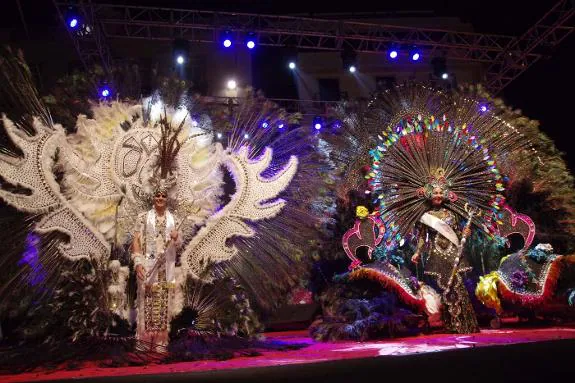

Sections
Highlight

SUR IN ENGLISH
Friday, 21 February 2020, 14:24
Compartir
Carnival, or Carnaval as it is called in Spanish, takes place every year close to the beginning of Lent. The date of Carnival is variable but traditionally it starts on 'jueves lardero' (sometimes 'jueves gordo': fat Thursday) and finishes on the following Tuesday.
Although Carnival probably arose from a pagan festival, it is celebrated throughout the world in mainly Catholic cultures. In Spain it is a very popular event with gaudy and ostentatious processions, satirical songs, drag queens and flower battles, but ends with the solemn burning or burying of a giant anchovy, sardine, gecko (and even a mollete in Antequera).
Malaga city
In Malaga city the satirical songs competitions (songs that poke fun at prominent members of society) have been taking place since January and performances will be held in the Plaza de la Merced and around the city centre between 21 February and 1 March.
The main events include a Drag Queen Gala in the Plaza de la Constitución (22 February, 9pm); The main Carnival procession is on Sunday, 23 February which will leave the Plaza de Fray Alonso de Santo Tomás at 5.30pm and end at the Plaza de la Merced. On 28 February is the Procession of the Gods starting at midday in the Plaza de la Constitución. It will repeat the route on the following day but at 6pm.
Also on 29 February, the famous Battle of the Flowers with brightly coloured confetti and streamers takes place at 8pm. The Procession of the Gods is repeated on 1 March at midday followed at 2pm by the gran boqueroná where fried anchovies will be offered to everyone. The burying of the anchovy takes place with a procession at 5pm starting from the Marqués de Larios statue.
Marbella
The Pasacalles del Humor takes place at noon on 22 February from the Plaza Santo Cristo and is followed by a childrens fancy dress competition. On the 28 February are performances by the traditional Carnival bands from 1pm. On Sunday is a mussel tasting event, free for all carnival goers. Comparsas and Murgas bands compete from 4-6 March from 9.30pm and on the last day, 7 March is the Desfile de Humor parade from 5.30pm.
Estepona
Held in the Parque El Calvario on 22 February unless it rains, in which case the event will be moved to the Centro Cultural Padre Manuel. The burying of the sardine takes place at around 5.30pm.
Benalmádena
The Carnival festival in Benalmádena has two big processions, the first is on 22 February starting at 5.30pm and will pass through the streets of Benalmádena Pueblo. It is followed by the Gran Baile de Carnaval (The Carnaval Ball) and competition for best fancy dress.
The second procession starts on 29 February and will be held in Arroyo de la Miel from 5.30pm. This too is followed by a dance and fancy dress competition. Throughout the town there will be Comparsas and Murgas groups playing. On the 1 March, at noon, leaving from the Plaza de la Mezquita, there is a procession carrying the largartija (gecko) which is then burnt on the Santa Ana beach.
La Herradura / Almuñecar
The main procession takes place on Saturday 22 February. The following day there is a pet fancy dress competition and the burying of the sardine.
Torremolinos celebrates Carnival much later, this year it will be held on 14 and 15 March. More information and programmes of events in other towns and villages can be found on town hall websites and Facebook.
Publicidad
Publicidad
Publicidad
Publicidad
Reporta un error en esta noticia
Necesitas ser suscriptor para poder votar.